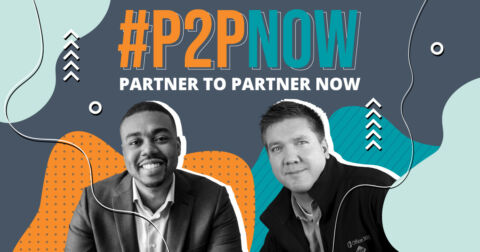One of the best ways to get involved in the greater Microsoft partner community is to take part in events when possible. The role of partners is critical to their success, and there are invaluable networking opportunities here as well.
In this episode of P2PNow, we chat about the different types of Microsoft events you can take part in and why they’re worth attending. We also go into why having a specific plan for participation is 100% worth it. Watch the session below or read on for a full transcript!
Transcription
Christian: Today’s topic comes from a recent discussion I had with a partner — focusing on how partners participate in Microsoft events.
Sam: Are you talking about the major Microsoft events, such as the IT Pro-focused Ignite and Developer-focused Build? Or Microsoft’s annual partner conference, Inspire, which generally happens every July?
Christian: Not just Ignite, Build, and Inspire — but looking at the broader category of Microsoft-hosted events that happen every year, all around the world. Working for various Microsoft partners for more than a decade, I’ve had the opportunity to participate as a speaker, sponsor, and attendee at events on five continents.
For most of these events – especially the larger, marquee events like Inspire – the role of partners is critical to their success. In fact, in my technology evangelism and business development roles, meeting with partners and slowly weaving my way through the expo halls to talk with vendors and partners is the real value in attending these events.
Sam: Isn’t it pretty straightforward for partners in how they can participate?
Microsoft always has a call for sponsors, and unless an event sells out all sponsorship spaces, you can usually swing in late in the game and secure a booth. How are partners not participating in events?
Christian: Well, that’s a great question. You’re right — the official sponsorship of Ignite or Build or Inspire is fairly straightforward.
You do need to be plugged in with channel leadership and your Microsoft contacts to be sure that you hear about marketing opportunities early, because most of these events do fill up quickly, and space is always limited. But that’s not really the guidance I had in mind for this segment.
Sam: I figured you had something else up your sleeve.
Christian: The first piece of advice I have for partners is to always go into these marquee events with a specific plan. Everyone who attends on your behalf should have specific goals, such as:
- Which sessions to attend, in case you want to quickly get up to speed on the latest releases or hear some specific use cases and customer stories
- Which competitors to scope out
- Which Microsoft teams or leaders you want to meet with
- Which of your current partners, and prospective partners, you want to meet with
Also, be sure to talk to your sales leadership and try to understand which current and prospective customers may be at the event.
Sam: So basically what you’re saying is that you should always be doing something. You should have a plan, and then execute on that plan.
Christian: Exactly.
Sam: I’m a fan of having an event brief, so that everyone attending knows their roles — and the metrics to measure the success of the event. That’s a big issue with most partners — they don’t define what success looks like for each event.
If you don’t define success, how do you know if you’re overachieved, or underachieved?
Christian: These events can be a huge investment for most partners. So it’s critical that you make the most of this investment.
I measure success based on that event brief. Such as:
- Did all of the meetings that I had planned actually happen?
- How many serendipitous encounters did I have? Ad hoc meetings can’t really be planned for, but if you’re finding yourself in a meeting dry spell, have a goal of introducing yourself to someone new 5-10 times each day. Make a goal.
Every time I make goals like these and make a concerted effort to reach them, I meet or exceed these goals.
Sam: And of course, once you’re back from the event, follow-up is key. As part of your plan, create a simple workflow and adhere to it.
Call your new leads and connect with them via LinkedIn and other social platforms, and make introductions to your sales and services teams as appropriate. There’s always a lot of work to do right after an event.
Christian: Exactly. That’s actually my second piece of advice for partners. You lose most of the value of your event investments by not following up. Always follow up!
Speaking of following up, if you have not already done so, be sure to sign up for the AvePoint partner program, and get started working with your partner manager to build out your success plan. You can join AvePoint’s Partner Program by going to www.avepoint.com/partners


